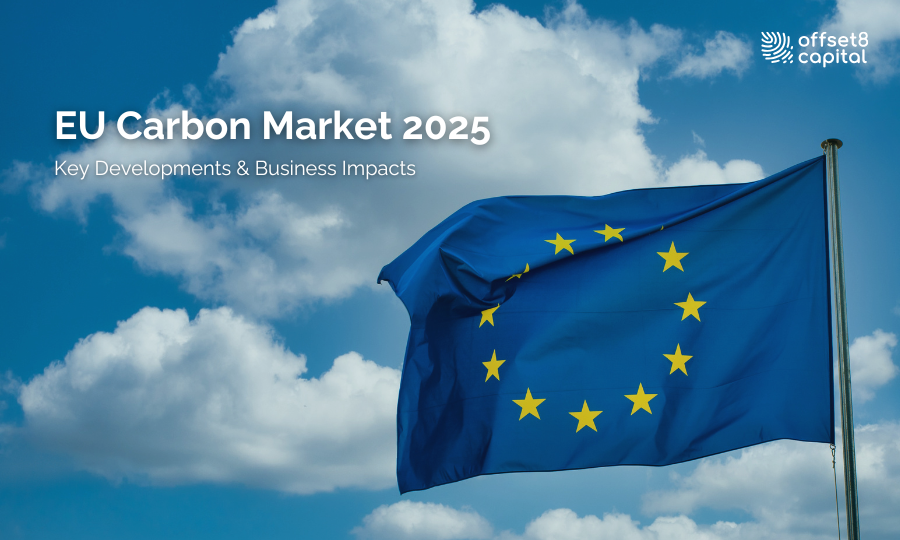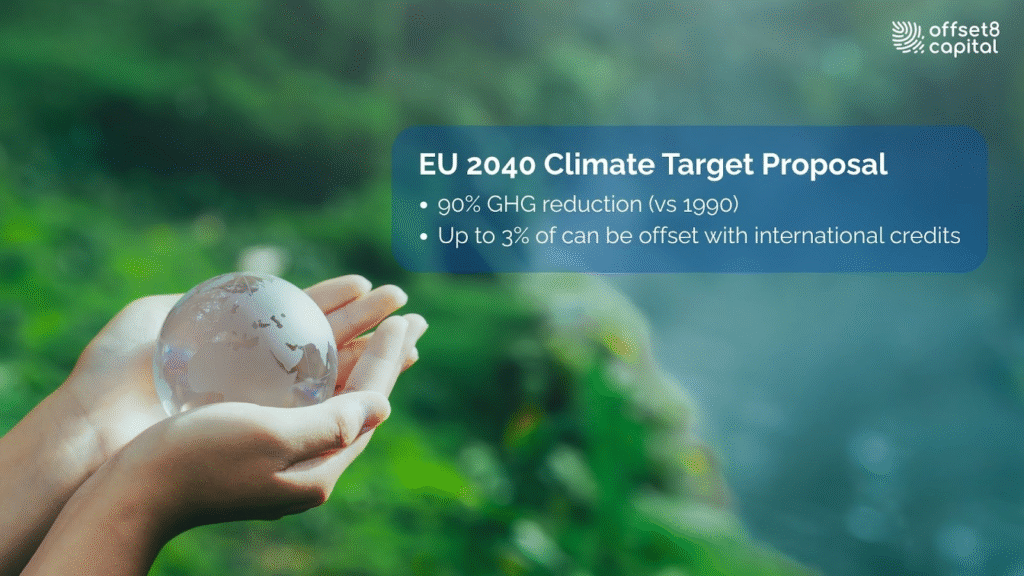
The European Union Emissions Trading System (EU ETS) is the world’s largest and most mature carbon market and it serves as the cornerstone of the EU’s climate policy. In 2025, important changes are unfolding. Carbon price movements, regulatory reforms, sectoral expansions and cross border mechanisms such as the Carbon Border Adjustment Mechanism (CBAM) are reshaping the market. This article provides an overview of the EU ETS in 2025, highlighting the latest developments and future implications for companies and investors.
The European Union Emissions Trading System functions as a market-driven mechanism that places a direct price on carbon dioxide emissions through a cap and trade framework. This approach establishes an emissions ceiling for sectors covered that systematically decreases annually, compelling overall emission reductions across European industry.
Market Structure and Trading Dynamics: Carbon allowances function as tradeable financial instruments on organized exchanges and over-the-counter markets, operating similarly to other commodity markets. Market prices emerge through demand and supply interactions, with influences including industrial activity levels, weather conditions, energy prices, and regulatory developments. The Market Stability Reserve provides automatic supply adjustments based on allowance surplus thresholds, supporting price stability and long-term market confidence.
Allowance System and Carbon Pricing: Within the EU emissions trading system framework, each emission allowance represents the right to emit one tonne of CO₂ equivalent. The annual cap limits total emissions available allowances, creating scarcity that establishes carbon pricing signals. Companies generating emissions below their allowance holdings can monetize surplus permits through trading, while entities exceeding allocations must acquire additional allowances to maintain compliance.
Core Market Participants: The system encompasses major industrial installations and power generators across participating EU member states, targeting the most carbon-intensive economic industrial sectors. Participation includes both direct emitters subject to compliance obligations and financial market participants who provide liquidity and risk management services to the carbon market.
Regulatory Compliance Framework: Covered by the ETS installations implement annual emissions monitoring using standardized methodological approaches and submit verified reports to regulatory authorities, often coordinated through national allocation plans. The compliance cycle requires companies to surrender allowances matching their actual emissions by April 30 each year. Enforcement mechanisms include €100 penalties per excess tonne of CO₂ emissions, coupled with mandatory allowance procurement requirements.
System integrity depends on comprehensive monitoring, reporting, and verification protocols that maintain environmental standards while delivering transparent, reliable emissions data essential for effective market operations and investment decision-making.
The EU emissions trading system is now in Phase IV which runs from 2021 to 2030. By the end of 2024, greenhouse gas emissions had declined by 47 percent compared with 2005. This places the EU on track to meet or even surpass the 62 percent emissions reduction target set for 2030. These results show that the system is working effectively to reduce greenhouse gas emissions.

The EU ETS continues to expand its scope. In 2024 the shipping sector was included, adding carbon costs to international logistics. In 2027, a new system called ETS2 will start, extending coverage to buildings, road transport and small fuel use. This development forces industries that were previously outside the system, such as construction and transport, to rethink their business models and decarbonization strategies. At the same time, the EU is phasing in the Carbon Border Adjustment Mechanism (CBAM). This will impose a carbon price on imports such as steel, cement, and fertilizers, with full compliance obligations starting in January 2026. As a result, the reach of European climate policy will extend beyond the EU’s internal market and increasingly affect global trade.
Created under the 2023 revision of the ETS Directive, ETS2 is a separate emissions trading scheme that will cover CO₂ emissions from fuel use in buildings, road transport and small industries not included in the existing EU ETS. It will operate as a cap-and-trade scheme starting in 2027, targeting a 42% emission reduction by 2030 compared to 2005. Allowances will be auctioned, and revenues will be directed to climate action and social support measures, including the Social Climate Fund to help vulnerable households and small businesses manage the transition.
EU ETS is designed to prioritize direct emission reductions within the European Union. Under the current framework, international carbon credits and offsets are not eligible for compliance under the EU ETS, reflecting the EU’s strict focus on environmental integrity and domestic abatement. However, policy discussions are shifting. In its 2040 climate target proposal, the EU introduced flexibility by allowing up to 3 percent of the reduction to be met with international carbon credits. This signals a potential reopening of the EU carbon market to carefully vetted international offsets in the coming decades.
Looking ahead, demand for high-quality voluntary carbon credits is likely to increase, especially those aligned with the Integrity Council for the Voluntary Carbon Market (ICVCM) standards. Similarly, credits recognized under CORSIA (the global aviation offsetting scheme) are expected to play a growing role. These developments could create opportunities for project developers, investors, and corporations that can supply or procure credits meeting robust integrity benchmarks to achieve lower emissions.

Fig 1: EU 2040 Climate Target Proposal
The European Union is carrying out a major reform of the EU ETS Directive, with public consultations running until July 2025. At the same time, the Commission has put forward an ambitious 2040 climate target of a 90 percent reduction in greenhouse gas emissions compared with 1990 levels. One notable feature of this proposal is the option to use international carbon credits for up to 3 percent of the reductions. This marks a significant policy shift, suggesting that high-quality carbon credits aligned with ICVCM standards could play a role in Europe’s decarbonization pathway to combat climate change. It also reopens the debate on the integration of the EU ETS with the voluntary carbon market (VCM), potentially reshaping global carbon trading strategies.
For companies, the EU ETS has evolved beyond compliance. It now acts as a strategic driver of corporate decision-making, investment planning, and risk management. Key implications include:
The EU ETS therefore represents both a compliance cost and a market opportunity. Companies that actively invest in low-carbon technologies, energy efficiency, and carbon credit strategies will be better positioned to manage risks and capture value in the transition to a net-zero economy.
By 2025, the EU carbon market has become more than a regulatory tool; it is now a key driver of global corporate strategies, investment flows, and voluntary carbon credit demand. With ETS2 expansion, CBAM implementation, rising EU carbon prices, and renewed discussions on international offsets, the EU ETS presents both risks and opportunities for businesses and investors.
To succeed in a carbon-constrained global economy, companies must go beyond compliance. The winners will be those who integrate voluntary carbon markets (VCM), high-quality credits, and green innovation into their corporate strategies, turning regulation-driven costs into opportunities for sustainable growth and competitive advantage.
Disclaimer
This commentary is for informational purposes only and should not be considered financial, investment, or regulatory advice. Offset8 Capital Limited is regulated by the ADGM FSRA (FSP No. 220178). No assurances or guarantees are made regarding its accuracy or completeness. Views expressed are our own and subject to change
The EU ETS is the world's largest carbon market. It caps emissions, allows trading of allowances, and drives cost-effective decarbonization across Europe. The system has generated substantial revenue for climate action while achieving significant emission reductions, demonstrating how market mechanisms can deliver both environmental outcomes and economic efficiency.
ETS2, launching in 2027, will cover fuel use in buildings, road transport, and small industries. It complements the EU ETS and directs revenues to climate and social support. This expansion will make the EU's carbon pricing system one of the most comprehensive globally, extending market-based climate policy to previously uncovered sectors.
Currently no, but the 2040 climate target proposal allows up to 3% of reductions via high-quality international credits, reopening debate on linking with voluntary markets. This potential integration creates significant opportunities for nature-based solutions and projects meeting ICVCM standards, particularly those that demonstrate strong environmental integrity and measurable climate impact.
Nature-based solutions are expected to play a significant role if the EU implements its proposal to allow up to 3% of emission reductions through international carbon credits. High-quality projects meeting ICVCM standards and demonstrating strong environmental integrity will be prioritized.